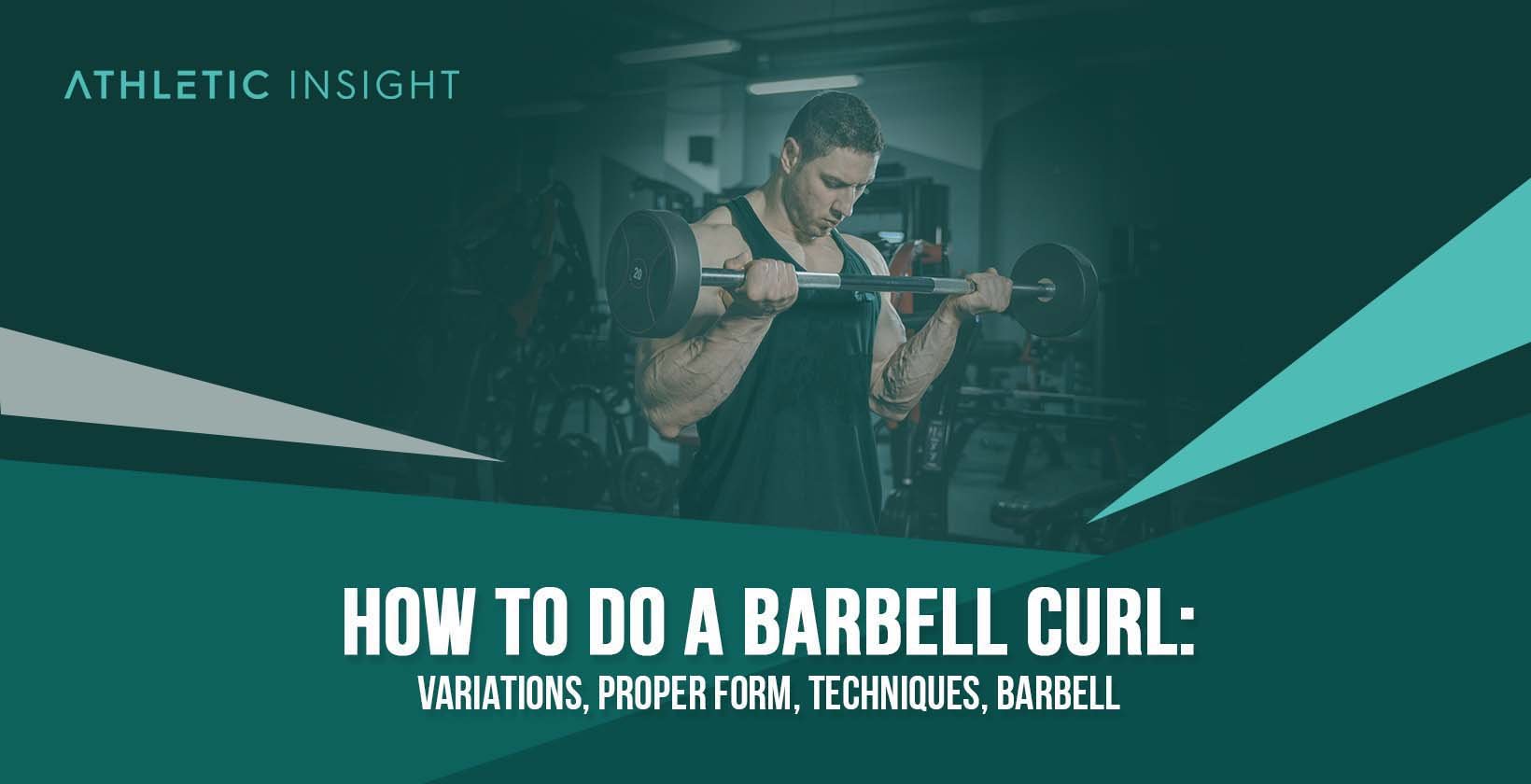The barbell curl is an exercise that targets the biceps brachii muscle. The benefits of the exercise include increased upper body strength, increased flexibility of the brachialis muscle, increased grip strength, and bicep enlargement.
To perform this exercise, you’ll want to stand firm with your chest up. Secure the barbell with an underhand grip and keep your elbows to your sides. Lift the barbell while keeping this posture, engaging the biceps.
There are over ten bicep curl variations that you can try with barbells. Some include the Kettlebell Curl, Hammer Curl, and Cable Curl. You’ll want to be careful with these standard barbell exercises, as bicep tendon tears can occur with improper form.
Start with a smaller weight and build up as your tolerance increases. Using heavier weights too soon can increase the risk of injury.
How to Perform Barbell Curl With Proper Form?
If done correctly, barbell curl is an effective workout to include in your biceps exercise routine. Proper form for barbell curls starts with good posture. Then you need to make sure you’re performing the full range of motion with a secure grip. Here’s a guide to making sure you do your barbell curls correctly.
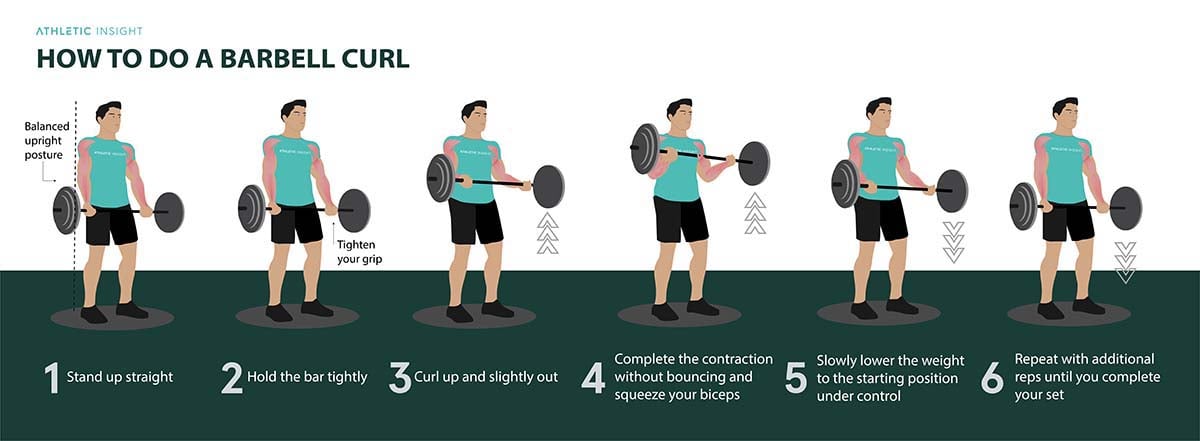
- Stand up straight
- Hold the bar tightly
- Curl up and slightly out
- Complete the contraction without bouncing and squeeze your biceps
- Slowly lower the weight to the starting position under control
- Repeat with additional reps until you complete your set
To get the most from the barbell curl, always maintain proper form. If you need to cheat to complete a rep or a set, you should switch to using less weight. Without proper form, you can injure yourself.
1. Stand up straight
Proper form starts with your stance. To dominate the barbell curl, stand with your feet shoulder-width apart, balanced and in an upright position. This means that your spine and head should be straight with your shoulders not hunched forward.
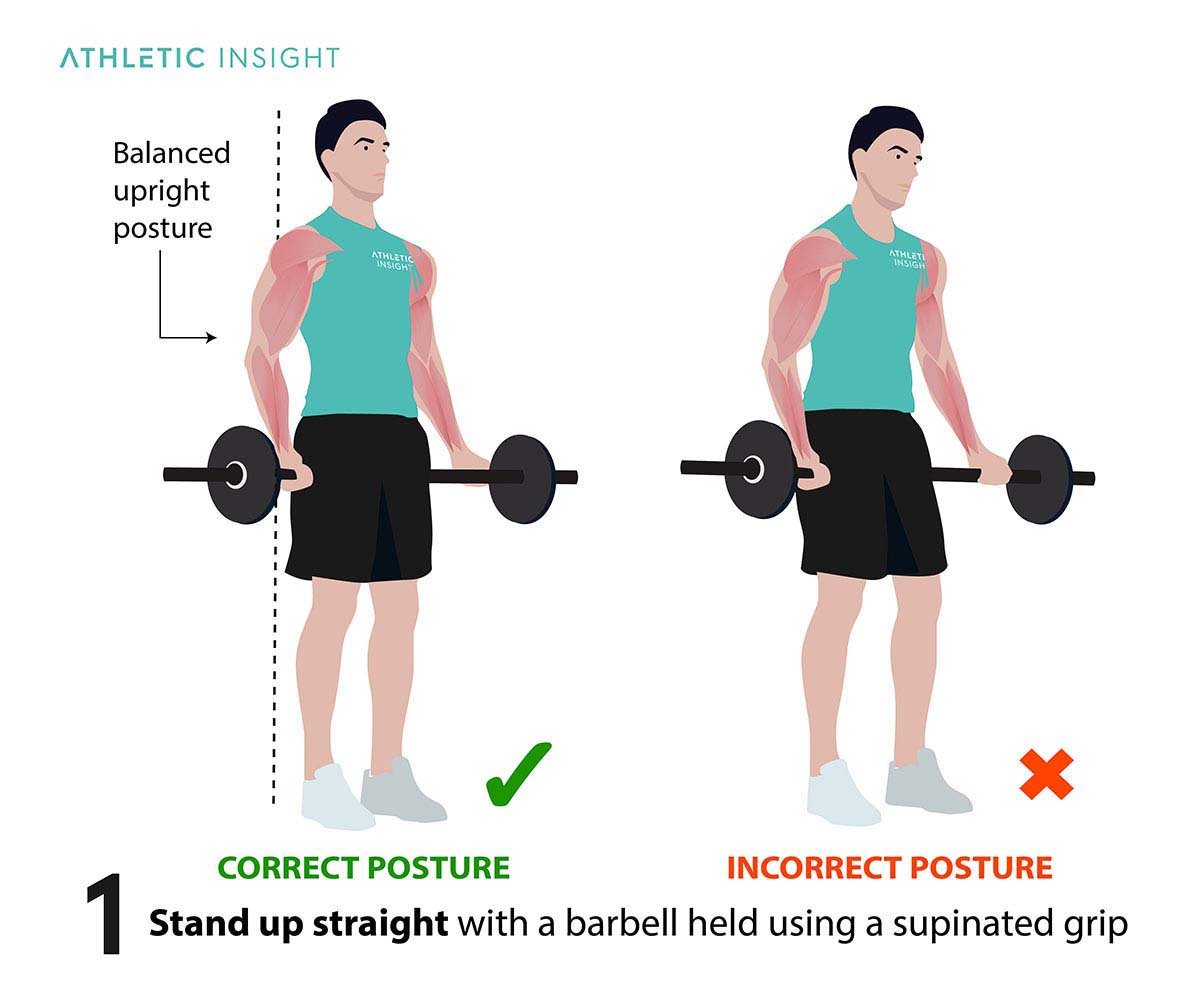
2. Hold the bar tightly
Believe it or not, the tighter you hold the bar, the easier the movement is to perform. Squeezing the bar harder will further contract your muscles and help to keep the core tight, as well as the major muscles involved.
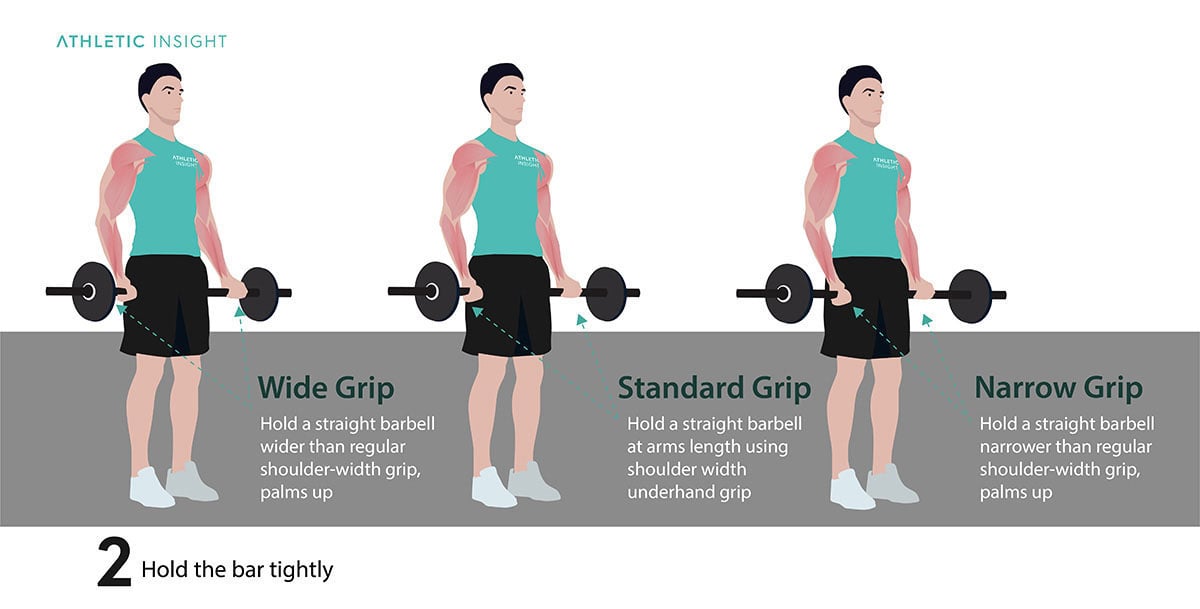
3. Curl up and slightly out
Although there are many variations, the basic barbell curl involves a typical bar path where the elbow acts as the pivot point. The bar also should extend outwards, creating a semi circle from the starting position until the bar reaches the chest.
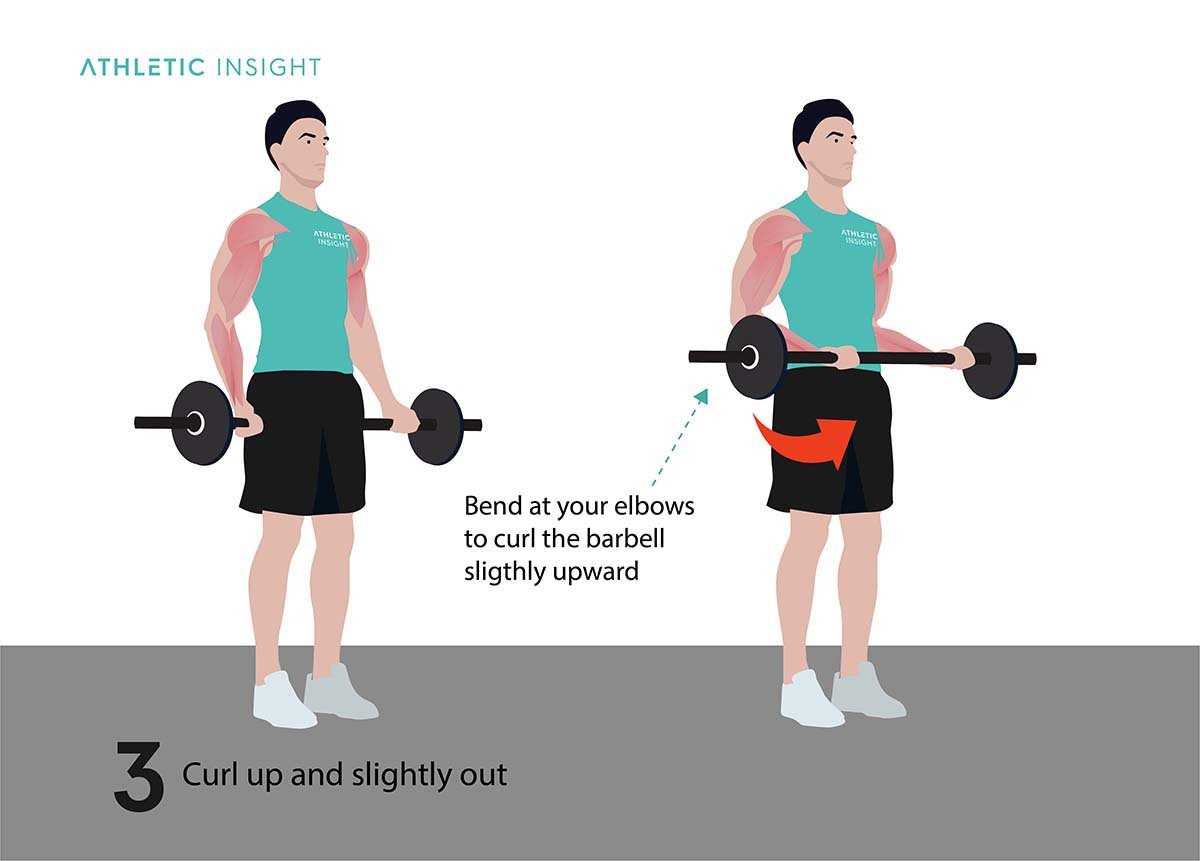
4. Complete the contraction without bouncing and squeeze your biceps
It is important to complete the contraction without bouncing. This concentric portion of the lift should not be done using momentum. Instead, it should be a controlled movement.
If you are going for hypertrophy, the lift should be done slowly. If power and explosiveness is the goal, a faster explosive rep is recommended. Lastly, squeeze your biceps at the top portion of the movement. This contraction helps to develop the muscles further.
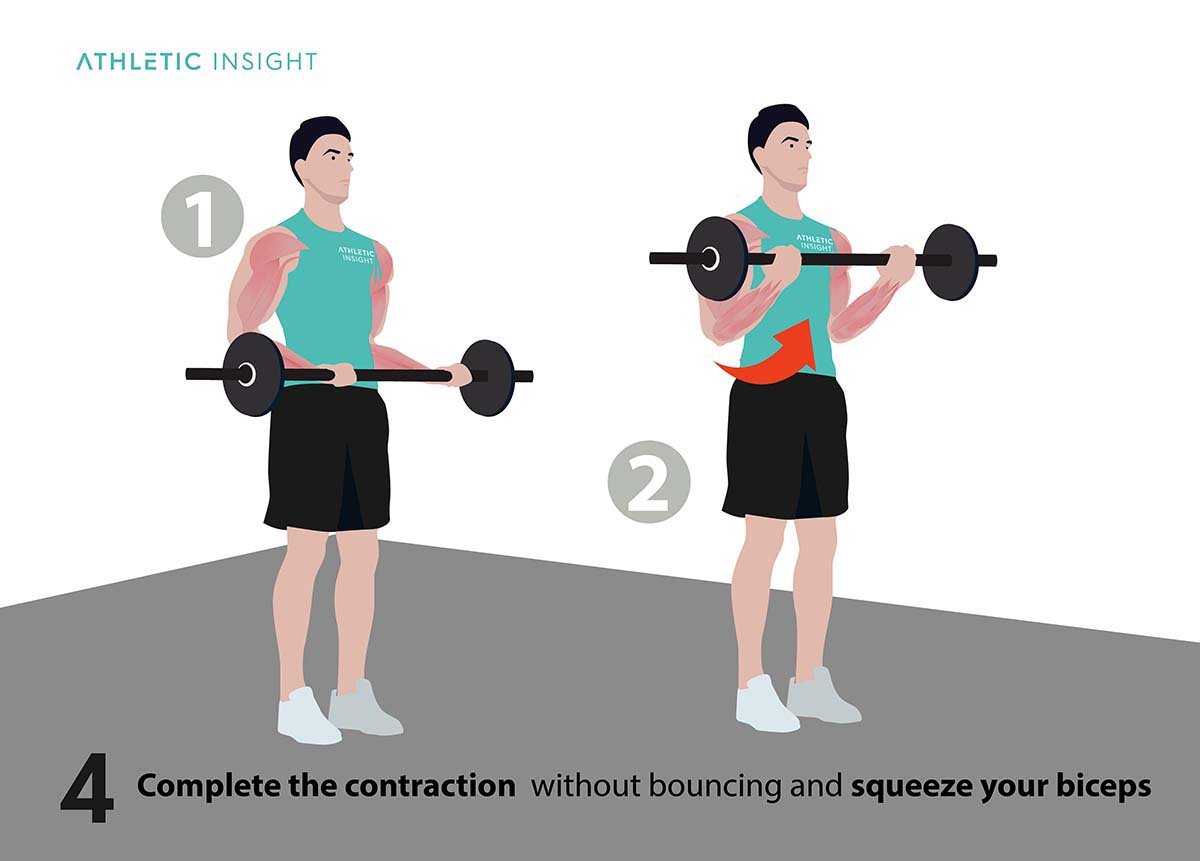
5. Slowly lower the weight to the starting position under control
Now, slowly lower the weight to the starting position while maintaining control. This eccentric contraction downwards is equally important to that of the concentric contraction recently performed, so it is crucial to maintain control and slow the movement. Slowing the eccentric portion of the movement will further strain the muscles, leading to better results.
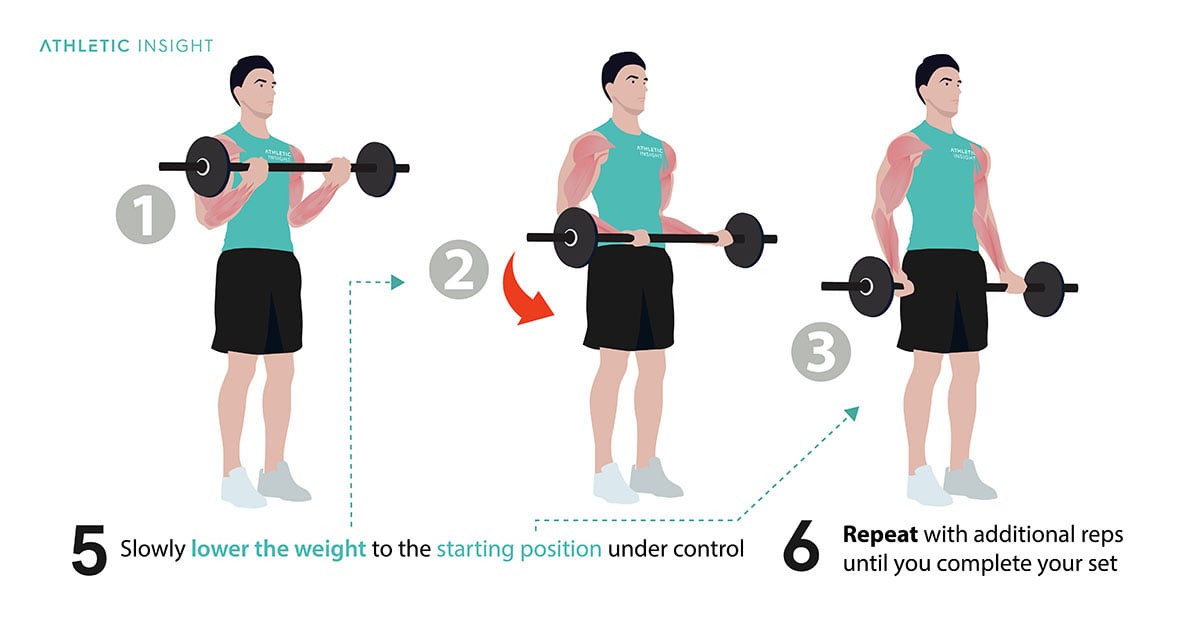
6. Repeat with additional reps until you complete your set
The last step is to repeat with additional reps until you complete your set. Depending on your goals, whether it be hypertrophy, increasing strength or improving muscular endurance, your weight, sets performed and rep range will differ.
What Are the Benefits of Barbell Curls?
If you don’t want to strengthen your biceps and increase muscle mass in that area, this may not be the exercise for you.
With the barbell curl, you’ll see the following benefits.
- Improved grip strength – barbell curls force your hands to hold heavier weights, building up their strength
- Injury prevention for elbows and arms – the muscles, ligaments, and tendons of your arms will become less prone to injury
- Increased upper body mass – barbell curls as part of an upper-body workout routine can help grow your entire upper body
- Bigger and stronger biceps – bicep curls will develop your bicep muscles and help them grow
What Are the Mistakes for Barbell Curl Form?
Form-related mistakes during barbell curling will lead to painful injuries and render your workouts ineffective. The best way to train yourself to perform a barbell curl properly is by first training with a stricter curling exercise. One way to do so is by using a preacher bench. It will force you to maintain proper form with your arms locked into position and your biceps isolated.
Using an arm blaster or another device that pins your elbows to your sides will force you to maintain a good barbell curl form when standing. Finally, once you have established good form, you can try to perform free-standing barbell curls. Just make sure to use the right weights and have a solid workout plan. Here are some mistakes to avoid.
- Excessive rocking
- Letting your elbows move away from your body
- Leaning backward
- Bouncing the weight at the top or the bottom
- Not controlling the release or eccentric phase of the exercise
- Using too much weight
- Overworking your tendons
- Cheating to try and lift weights that are too heavy
How To Determine Proper Weight for the Barbell Curl?
Estimating the proper weight to start with for a barbell curl is part science and part instinct. You should add weight if you can easily curl the bar a dozen times or more. Consider that a standard Olympic barbell is 45 pounds, a fairly significant weight for most people to use at the start.
Now, if you add a five-pound plate to each side of the bar, you’re curling more than 50 pounds total. As the weight on the bar increases, you’ll find it’s hard to complete as many reps. When you find a weight that is difficult to curl a dozen times, that should be your maximum weight as a beginner.
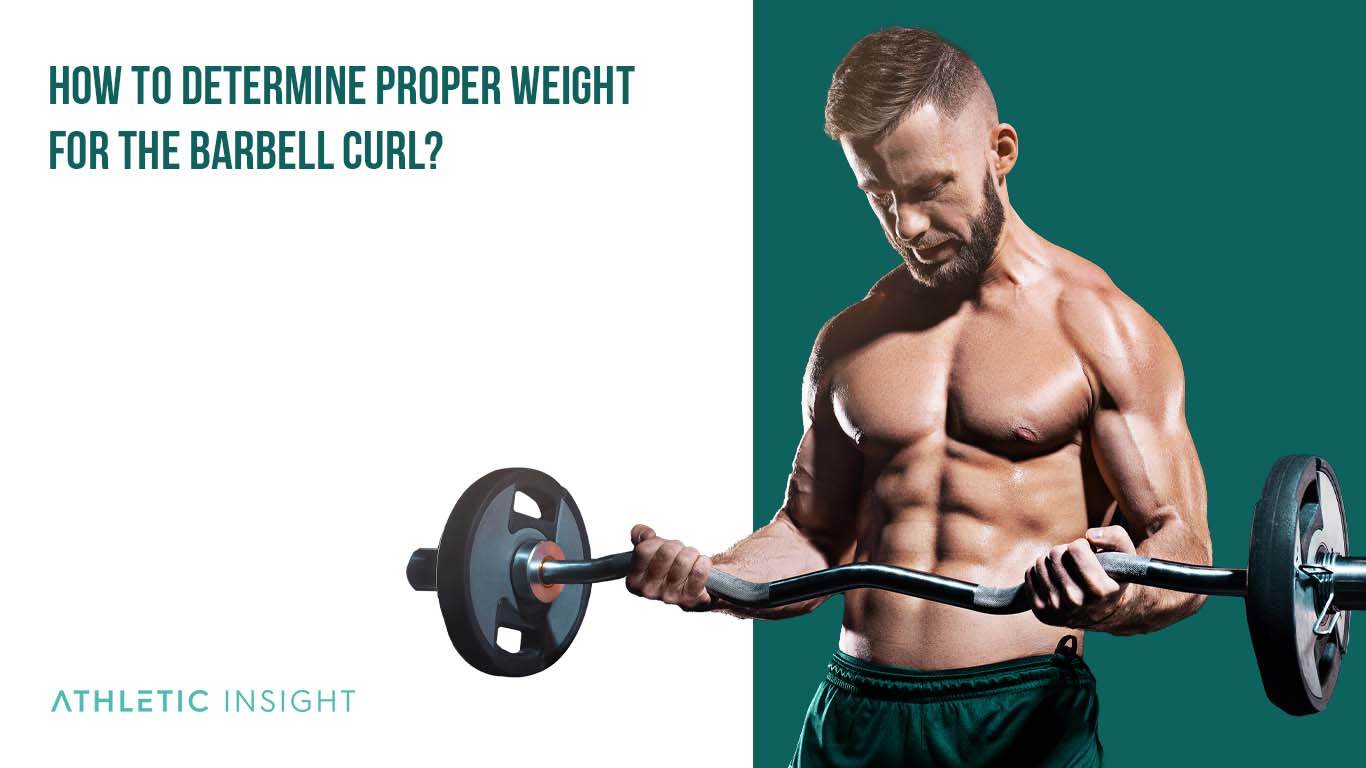
A full workout of barbell curls might start with two sets of 12 reps with just the bar. Then, a set of as many reps as possible with an additional 10 or 15 pounds of weight plates added. Once you can easily do 15 reps with your highest weight, you can bump things up a bit. Just make sure to always start with a warm up weight.
This methodology of determining a starting weight is fairly safe. As you get more experienced, you can increase the weight and lower the number of reps per set. It may sound strange, but you should work toward failing to meet your reps to get the most out of your muscles.
Which Muscles Are Involved While Performing the Barbell Curl?
The barbell curl primarily works the bicep brachii muscles. The bicep brachii has two heads, the short head, and the long head. Each curl forces those muscles to work together to lift the weight toward your shoulders. Lowering the weighted bar with control keeps the muscles tense and helps build endurance and stability.
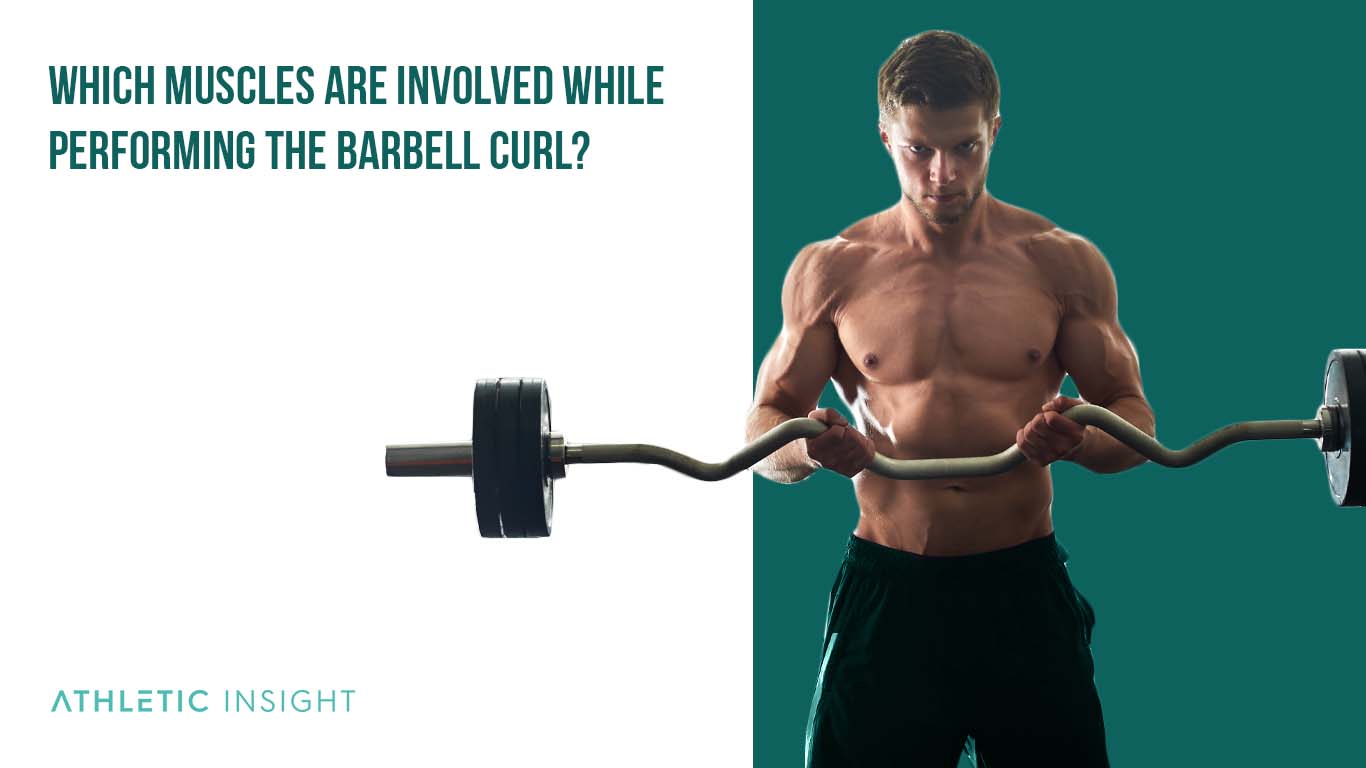
Tangentially, bicep curls also work the bicep brachialis and the rest of the forearm muscles. The bicep brachialis is the muscle on top of your forearm that crosses your elbow. It also gets a lot of work in controlling the weight during a curl. The effort that it takes to hold the barbell gives the forearm, and all the small muscles in your hands, a solid workout as well.
What Are the Barbell Curl Variations?
Barbell curl variations change which part of the bicep is worked the hardest, targeting it for development. Those changes usually come from adjusting your grip. For example, rotating your hand toward an overhand grip increases the focus on your forearm. Rotating your grip in the other direction does the opposite.
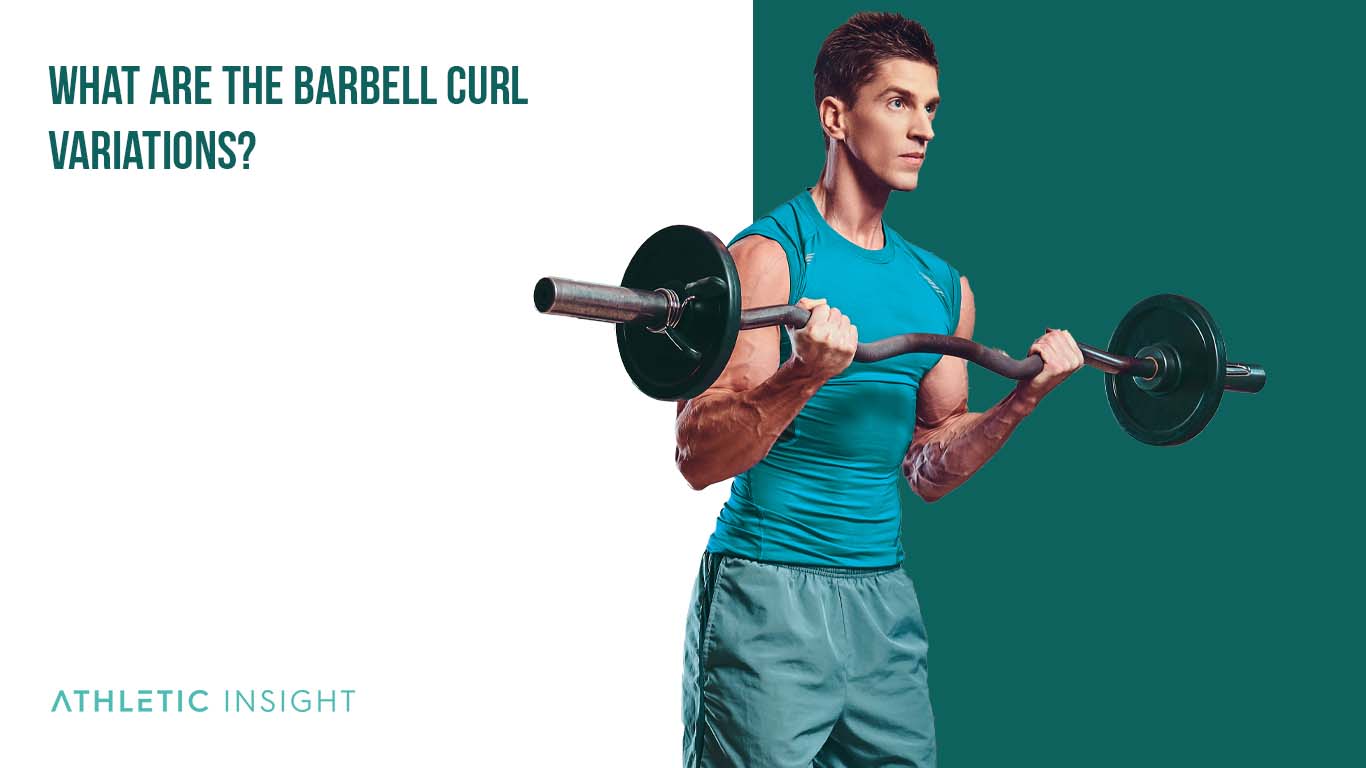
The muscles in your bicep aren’t just responsible for moving your arm upwards and downwards. Those same muscles help rotate your hands. So for complete development, you have to find exercises that target every area of the bicep.
Here are some of the top variations of the barbell curl.
- EZ bar curls – a shorter bar with v-shaped grips for your hands, so you can work inner and outer biceps by changing your hand positions
- Barbell preacher curl – preacher curls are done on a bench with an armrest that supports your elbows and doesn’t allow you to use any muscles other than the biceps to move the weight
- Wide-grip barbell curl – performing curls on a barbell using a wider grip accentuates forces the inner bicep to work harder
- Seated barbell curl – a seated barbell curl shortens the range of motion you can achieve, as the bar will contact your thighs after only about 90 degrees of motion, instead of the 180 you get when standing. This is a good way to do partial reps with more weight to build up to bigger complete lifts and master good form.
What Is the Necessary Equipment for Barbell Curls?
To perform best barbell curl barbells, you only need a barbell and adequate weights. However, a mirror can be useful to help see your form and improve upon it.
Beginners may find it useful to lean back against a solid wall. This will ensure good posture and proper form as you learn this new exercise. If you slouch, lean to the side, or rock back and forth, you not only risk injury, but you’re not getting the most out of your workout.
Leaning back against a wall and doing your curls with your back and elbows against it makes you exercise with better form, which in turn increases the difficulty of the exercise.
Lastly, a rack for your bar and weights can be useful as storage. Otherwise, you’ll need to store your weights on the floor.
What Are the Barbell Curl Related Facts?
Before you dive into a new exercise, it’s a good idea to learn as much about it as possible. For example, some lifters rotate their hands while performing barbell curls, creating an exercise called a cable curl—it targets the top of the bicep.
Read on for more information about barbell curls and how this exercise might affect you.
Does the Barbell Curl Affect the Hormones?
Barbell curls and other resistance exercises affect how the body produces hormones. Studies have shown that weight lifting increases adrenaline (epinephrine) production. There may even be increases in testosterone production.
These changes are likely brought on by the stress that weight lifting, like barbell curls, puts on our bodies. The result of our workouts is that our muscle fibers break down, and they build back stronger. So consistently harnessing that effect helps increase your strength and size.
Does the Barbell Curl affect the mood?
Barbell curls and other forms of exercise have been shown to boost our moods post-workout. Whether this boost is part of the stress reaction itself or an ancillary effect of increasing your fitness is unknown.
Is the Barbell Curl a Military Movement?
Barbell curls are not a military exercises. The military stresses other exercises for full-body development, whereas curls are very specific.
Is the Barbell Curl dangerous?
Barbell curls are not as dangerous as many other weight lifting exercises. That’s because the weight is never over your body or in a position to fall on you. You still have to lift the weights carefully so that you don’t strain a muscle, but it’s a relatively safe exercise.
Is the Barbell Curl Essential?
A barbell curl is essential for the increased development of your bicep muscles. It is an excellent exercise to increase the strength of both heads of the bicep brachii. You can get great results in a relatively short period when performed consistently and correctly.
Is the Barbell Curl a Compound Exercise?
Yes, a barbell curl is a compound exercise. Compound exercises use more than one joint, so barbell curls count. Try not to swing your back or your arms, making sure you perform the exercise with excellent form.

